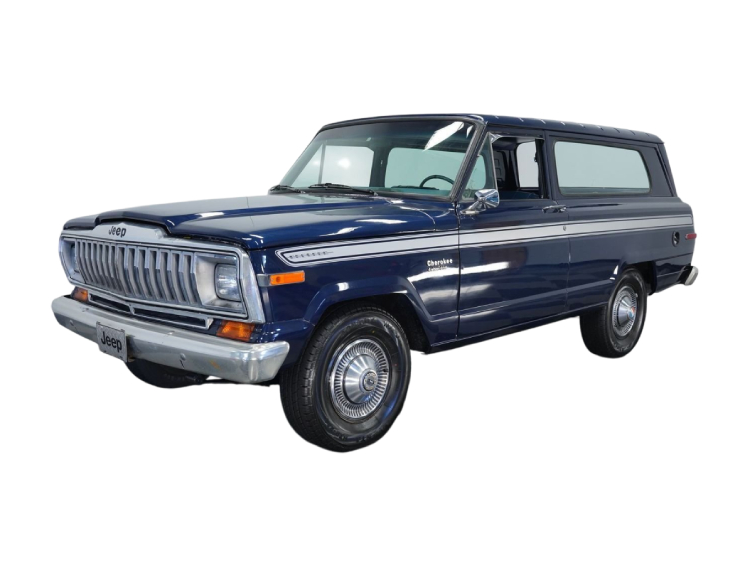Repair instructions
A Closer Look at the History of the Jeep Comanche
Summary: The Jeep Comanche, introduced in the mid-1980s, was a compact pickup truck that stood out for its performance, durability, and innovation. Based on the Jeep Cherokee platform, it set multiple international speed records but ultimately couldn’t match its competitors in sales. Despite its short production run, the Comanche remains a respected model among truck enthusiasts.
The Jeep Comanche: A Brief History
In the mid-1970s, pickup trucks gained traction as an alternative to traditional sedans. The rise of compact trucks from Japanese manufacturers, such as the Toyota Hilux and Mazda B Series, pushed American companies to respond with more versatile and efficient models. Jeep, under the ownership of American Motors Corporation (AMC), saw an opportunity and introduced the Jeep Comanche in 1986 to compete in the growing compact truck market.

The Comanche was based on the highly successful Jeep Cherokee SUV, sharing much of its drivetrain, unibody construction, and front-end styling. However, the key difference was its truck bed, which helped position the Comanche as a functional workhorse. Despite its technical advantages, the Comanche faced stiff competition from well-established models like the Toyota Hilux, Ford Ranger, and Dodge Ram 50, and struggled to keep pace in a crowded market.
The Jeep Comanche was discontinued in 1992 following Chrysler’s acquisition of AMC, which led to the restructuring of Jeep’s lineup. Dodge became the primary brand for body-on-frame trucks, while Jeep focused more on its SUV offerings. Additionally, models like the Cherokee and Wagoneer, with their superior sales and performance, overshadowed the Comanche, contributing to its eventual decline.
Jeep Comanche Specifications: Power and Performance
When the Comanche debuted in 1986, it was available with a few engine options, starting with a 2.8-liter V6 engine that produced 115 horsepower and 150 lb-ft of torque. While this was adequate for light-duty tasks, it wasn’t the most powerful in its class. In 1987, Jeep introduced a more robust 4.0-liter inline-six engine that delivered 173 horsepower and 220 lb-ft of torque—dramatically improving the truck’s towing capacity and overall performance. This engine was paired with a manual transmission and could tow up to 2,000 pounds, making the Comanche a solid choice for hauling.
One of the standout features of the Comanche was its fuel efficiency, especially considering it was still using a two-barrel carburetor system instead of more modern fuel injection. In 1986, the Comanche offered an impressive 21 MPG in the city and 25 MPG on the highway. As the years went on, the fuel economy dipped slightly, but it remained competitive with trucks like the Ford Ranger and Chevy S-10.
The Comanche’s reputation for durability and ease of maintenance also contributed to its appeal. With millions of Jeep Cherokees on the road by the 1980s, spare parts were plentiful and affordable. Many owners reported their Comanches running strong for well over 250,000 miles without major issues.
Jeep Comanche’s Legacy: Record-Breaking Performance
Despite its relatively short production run, the Jeep Comanche left an indelible mark on the automotive world. In the mid-1980s, Jeep’s engineering team decided to put the Comanche’s capabilities to the test by attempting to break land speed records. The goal was to showcase the power of the 4.0-liter inline-six engine.
In 1986, Jeep achieved impressive results at the Bonneville Salt Flats, where the Comanche hit speeds of 144 mph, setting several national and international speed records. The Comanche broke nine records in total, including four outside the United States, proving that it wasn’t just a practical truck—it was a high-performance machine.
Jeep marketed the Comanche as an all-terrain performer, excelling both on and off-road. While it was a capable vehicle, the model never captured the market share it needed to survive. Between 1986 and 1992, only 190,000 units were sold. The Comanche’s best year came in 1988, with 43,718 units sold, but by 1992, production had dwindled to just 950 units before the truck was discontinued.
Conclusion: Why the Jeep Comanche Never Took Off
The Jeep Comanche was a truck ahead of its time in many ways. With its powerful engine options, impressive towing capacity, and solid fuel economy, it had the potential to be a serious contender in the compact pickup segment. However, it faced intense competition from other manufacturers and struggled to gain widespread popularity. When Chrysler acquired AMC in 1987, the focus shifted away from the Comanche, and Jeep began concentrating on its more profitable SUV lineup.
Today, the Jeep Comanche is remembered as a rugged, capable, and durable vehicle—one that holds a special place in the hearts of truck enthusiasts and collectors. If you’re lucky enough to come across a well-maintained Comanche, you’re looking at a piece of Jeep history that didn’t quite get the recognition it deserved but still commands respect for its performance and legacy.
